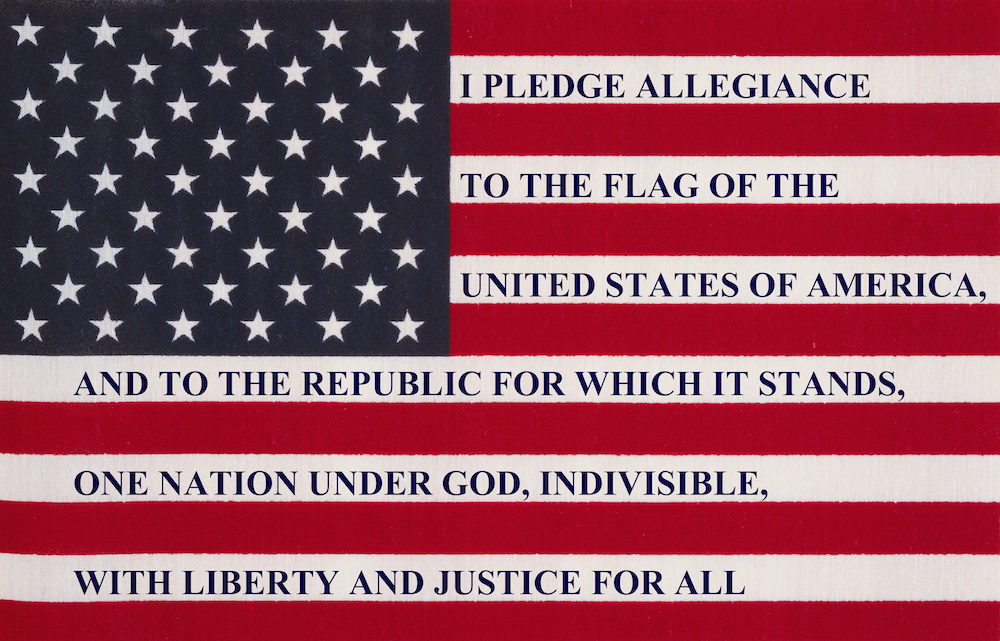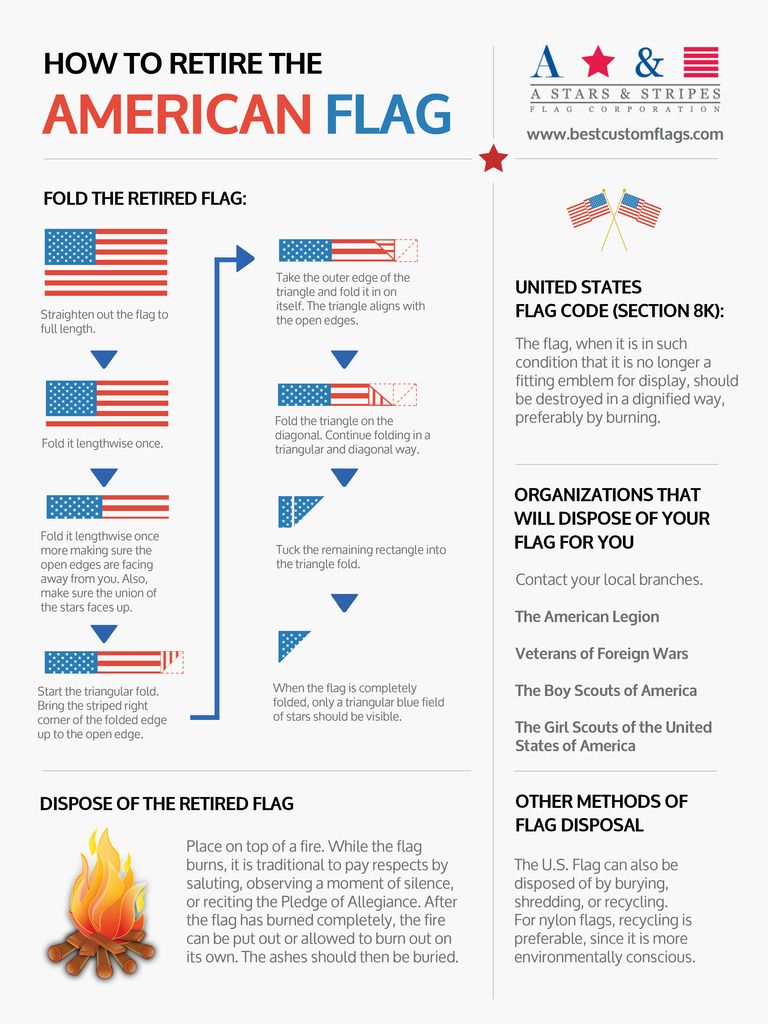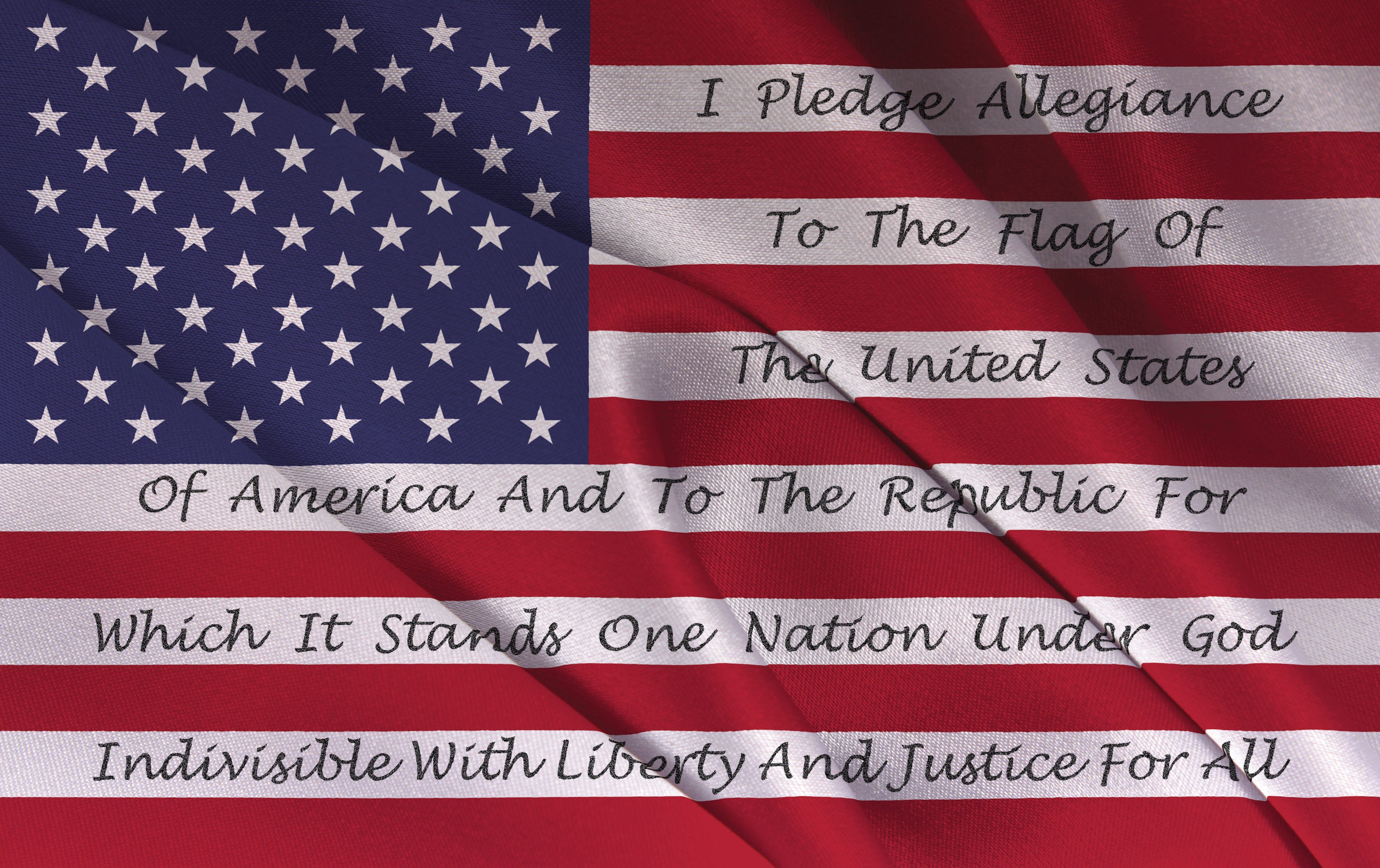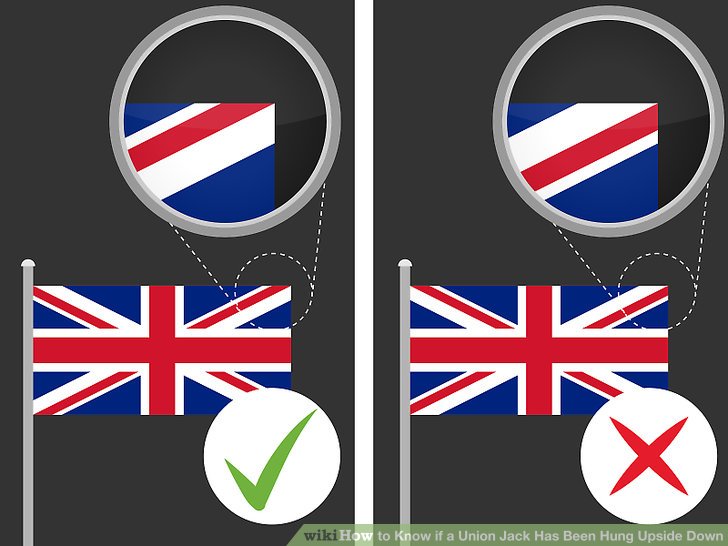How many stripes are on the flag: The flag of the United States of America
Facts about the United States Flag
Until the Executive Order of June 24, 1912, neither the order of the stars nor the proportions of the flag was prescribed. Consequently, flags dating before this period sometimes show unusual arrangements of the stars and odd proportions, these features being left to the discretion of the flag maker. In general, however, straight rows of stars and proportions similar to those later adopted officially were used. The principal acts affecting the flag of the United States are the following:
- Flag Resolution of June 14, 1777, stated, “Resolved: that the flag of the United States be made of thirteen stripes, alternate red and white; that the union be thirteen stars, white in a blue field, representing a new Constellation.”
- Act of January 13, 1794, provided for 15 stripes and 15 stars after May 1795.
- Act of April 4, 1818, provided for 13 stripes and one star for each state, to be added to the flag on the 4th of July following the admission of each new state.

- Executive Order of President Taft dated June 24, 1912, established proportions of the flag and provided for arrangement of the stars in six horizontal rows of eight each, a single point of each star to be upward.
- Executive Order of President Eisenhower dated January 3, 1959, provided for the arrangement of the stars in seven rows of seven stars each, staggered horizontally and vertically.
- Executive Order of President Eisenhower dated August 21, 1959, provided for the arrangement of the stars in nine rows of stars staggered horizontally and eleven rows of stars staggered vertically.
NUMBER OF STARS IN THE U.S. FLAG, AND ADDITIONAL STATES REPRESENTED
1777 TO PRESENT
|
Date of Flag
|
Additional states with date of entry into Union
|
| 13 stars – 1777 to 1795 |
Delaware (December 7, 1787)
Pennsylvania (December 12, 1787)
New Jersey (December 18, 1787)
Georgia (January 2, 1788)
Connecticut (January 9, 1788)
Massachusetts (February 6, 1788)
Maryland (April 28, 1788)
South Carolina (May 23, 1788)
New Hampshire (June 21, 1788)
Virginia (June 25, 1788)
New York (July 26, 1788)
North Carolina (November 21, 1789)
Rhode Island (May 29, 1790)
|
| 15 stars – 1795 to 1818 |
Vermont (March 4, 1791)
Kentucky (June 1, 1792)
|
| 20 stars – 1818 to July 3, 1819 |
Tennessee (June 1, 1796)
Ohio (March 1, 1803)
Louisiana (April 30, 1812)
Indiana (December 11, 1816)
Mississippi (December 10, 1817)
|
| 21 stars – July 4, 1819 to July 3, 1820 |
Illinois (December 3, 1818)
|
| 23 stars – July 4, 1820 to July 3, 1822 |
Alabama (December 14, 1819)
Maine (March 15, 1820)
|
| 24 stars – July 4, 1822 to July 3, 1836 |
Missouri (August 10, 1821)
|
| 25 stars – July 4, 1836 to July 3, 1837 |
Arkansas (June 15, 1836)
|
| 26 stars – July 4, 1837 to July 3, 1845 |
Michigan (Jan 26, 1837)
|
| 27 stars – July 4, 1845 to July 3, 1846 |
Florida (March 3, 1845)
|
| 28 stars – July 4, 1846 to July 3, 1847 |
Texas (December 29, 1845)
|
| 29 stars – July 4, 1847 to July 3, 1848 |
Iowa (December 28, 1846)
|
| 30 stars – July 4, 1848 to July 3, 1851 |
Wisconsin (May 29, 1848)
|
| 31 stars – July 4, 1851 to July 3, 1858 |
California (September 9, 1850)
|
| 32 stars – July 4, 1858 to July 3, 1859 |
Minnesota (May 11, 1858)
|
| 33 stars – July 4, 1859 to July 3, 1861 |
Oregon (February 14, 1859)
|
| 34 stars – July 4, 1861 to July 3, 1863 |
Kansas (January 29, 1861)
|
| 35 stars – July 4, 1863 to July 3, 1865 |
West Virginia (June 20, 1863)
|
| 36 stars – July 4, 1865 to July 3, 1867 |
Nevada (October 31, 1864)
|
| 37 stars – July 4, 1867 to July 3, 1877 |
Nebraska (March 1, 1867)
|
| 38 stars – July 4, 1877 to July 3, 1890 |
Colorado (August 1, 1876)
|
| 43 stars – July 4, 1890 to July 3, 1891 |
North Dakota (November 2, 1889)
South Dakota (November 2, 1889)
Montana (November 8, 1889)
Washington (November 11, 1889)
Idaho (July 3, 1890)
|
| 44 stars – July 4, 1891 to July 3, 1896 |
Wyoming (July 10, 1890)
|
| 45 stars – July 4, 1896 to July 3, 1908 |
Utah (January 4, 1896)
|
| 46 stars – July 4, 1908 to July 3, 1912 |
Oklahoma (November 16, 1907)
|
| 48 stars – July 4, 1912 to July 3, 1959 |
New Mexico (January 6, 1912)
Arizona (February 14, 1912)
|
| 49 stars – July 4, 1959 to July 3, 1960 |
Alaska (January 3, 1959)
|
| 50 stars – July 4, 1960 to present |
Hawaii (August 21, 1959)
|
Prepared by the Armed Forces History Collections,
in cooperation with Public Inquiry Services,
Smithsonian Institution
Rev. 9/2001
9/2001
Flag of USA (51 stars)
By Alex Crouch on 19 January 2015 in Flag Facts
The flag of the U.S.A. is perhaps the most recognisable in the world, and depending on your perspective it symbolises the land of the free and the home of the brave, or, is the face of everything that’s wrong with the world or just your country. So when angry business owners in Moscow starting using the flag as a doormat last month to protest U.S. sanctions on Russia, many Muscovites were only too happy to oblige.
Given the past and present anti-American sentiment in Russia they may need more doormats before long. But will the actual U.S. flag need more stars soon?
It is widely known that the 50 stars on the flag of the United States represent the states themselves. When the Stars and Stripes was adopted in 1777 there were 13 states (then colonies), thus a 13-star flag, and as each new state was admitted to the union a star was added to the flag. The current 50-star flag, acknowledging Hawaii’s admission, was unveiled on 4th July 1960.
The current 50-star flag, acknowledging Hawaii’s admission, was unveiled on 4th July 1960.
Should a 51st state become a reality there’s already proposed future designs for the updated flag.
The first is similar to the descending rows of stars [6-5-6-5-6-5-6-5-6] we have today. On the 51-star version the rows of stars would descend: 9-8-9-8-9-8.
A second draft of the 51-star flag sees the row pattern altered to: 6-7-8-9-8-7-6.
The pro-statehood New Progressive Party of Puerto Rico have designed their own 51-star flag that sees the stars positioned in a circle. There’s one in the middle, five around it, 10 around them, 15 around them and 20 on the outer ring.
On the same day as the 2012 U.S. presidential election Puerto Rico held a status referendum on its current relationship with America. Fifty-four per cent of those who voted said Puerto Rico shouldn’t continue its current territorial status, while 61 per cent preferred U.S. -statehood as the alternative.
-statehood as the alternative.
Puerto Rico has been an unincorporated U.S. territory since the 1898 Spanish-American War and its citizens were granted U.S. citizenship in 1917. But Puerto Ricans cannot vote in presidential elections unless they live in America, which also controls the island’s foreign policy.
In January last year President Obama approved $2.5m for a statehood referendum in Puerto Rico.
State-side there’s a campaign to have the capital, Washington D.C., become a state too.
There also exist plans for a 52, 53, 54 and even a 55-star flag should there be cause for one.
Bonus Fact: The 13 colonies to declare independence from Great Britain in 1776 are represented by the 13 stripes on the current U.S. flag.
Alex Crouch is a 2014 journalism graduate from Southampton Solent University. He has followed Formula One since before he started infant school, was a Games Maker during the London Paralympics and saw Pink Floyd reunite for one song at The O2 in London. Links: Twitter, blog, YouTube. Alex is an accredited Flag Institute journalist.
Links: Twitter, blog, YouTube. Alex is an accredited Flag Institute journalist.
Flag Institute: Change of Official Address
A new flag for Birmingham
How many stars are on the US flag and what do they mean
Published:
US Flag: Unsplash
The flag of the United States of America is one of the most recognizable in the world. But not many people know the meaning of the main symbol of this country. What does the banner of the state mean and what interesting facts are associated with it?
History and symbolism of the US flag
In 1776, when the USA was declared an independent state, they did not yet have an official flag. The first flag – the so-called Continental Flag – was based on the flag of the British East India Company. Since then, the symbol has changed its appearance several times. In 1777, the Continental Congress approved a flag similar to the modern one. nine0005
The first flag – the so-called Continental Flag – was based on the flag of the British East India Company. Since then, the symbol has changed its appearance several times. In 1777, the Continental Congress approved a flag similar to the modern one. nine0005
What does the US flag look like?
The banner of the United States is a rectangular canvas, which consists of a blue roof with white stars and alternating seven red and six white stripes. Initially, there were 13 stars on the canvas, as well as colonies that separated from Great Britain and became part of an independent state. The stars were arranged in a circle, forming a constellation. The design of the flag has changed over the years.
What do the stars on the US flag mean? These are the symbols of the states that make up the state. Each time a new administrative-territorial unit joined the United States, a new star appeared on the flag. Last time it happened at 1959th year, when Hawaii became part of the state.
How many stars are on the US flag? As of 2021, there are exactly 50 of them. However, the US Army Institute of Heraldry has already prepared proposals to change the design of the canvas in case new states appear and the number of stars increases.
Design of the US flag with 51 stars proposed by the Institute of Heraldry: Wikipedia
What does the US flag mean? If the stars are the symbols of the states, then the stripes are the personification of America’s independence from the former colonialists:
- The red color symbolizes Great Britain, the homeland of the settlers.
- White talks about separation from the mother country. It is a symbol of freedom and independence.
- The blue roof is a symbol of the union of many states.
Theories of the origin of the flag
There is no exact information about who was the author of the American flag. According to the flag’s official website, it was probably designed by Congressman Francis Hopkinson, a New Jersey lawyer and one of the signers of the Declaration of Independence. nine0005
nine0005
There is also a legend about Philadelphia seamstress Betsy Ross, who made the first flag for Independence Day. According to legend, she suggested replacing six-pointed stars with five-pointed ones. However, there is no documentary evidence of the dressmaker’s involvement in the creation of the flag.
Betsy Ross is the probable author of the US flag: YouTube/Studies Weekly
Interesting facts about the US flag
The banner of the United States has a long and interesting history. During this time, a lot of interesting facts have accumulated. nine0005
The appearance of the flag was different
The proportions of the flag, the placement of the stars and stripes were not documented until 1912. Therefore, different banners could be found in different parts of the state. Today, the design of the flag is strictly regulated. The corresponding specification gives all the correct ratios of the parts of the canvas up to the diameter of the stars and the distances between them.
New stripes in honor of the new states
In 1795, when Vermont and Kentucky joined the United States, not only two stars appeared on the flag, but also two new stripes. At 19In the 18th year, the states of Tennessee, Ohio, Mississippi, Louisiana and Indiana entered the state. Adding so many bands became problematic. This is probably what motivated Congress to return to the usual 13 stripes, and add only stars in honor of the new states.
The flag inspired the creation of the anthem
The same flag with 15 stripes and 15 stars inspired the creation of the US anthem. During the war with Great Britain (1814), the banner fluttering over Fort McHenry so inspired Francis Scott Key that he composed a poem in his honor. Lines from his “Stars and Stripes Banner” at 19The 31st became the text of the anthem.
US Flag: Unsplash
Unique Colors
The US flag is unique in that its red and blue colors are darker than on the banners of other countries. There is no symbolism in this, and the explanation is prosaic. At the time of the creation of the flag, there were not enough resistant dyes, and the usual red and blue colors quickly lost their hue.
There is no symbolism in this, and the explanation is prosaic. At the time of the creation of the flag, there were not enough resistant dyes, and the usual red and blue colors quickly lost their hue.
More than one century has passed, both high-quality dyes and modern technologies for dyeing the canvas have appeared. But the US has retained the traditional hues of its symbol. The navy blue used on the flag is called “Navy Blue” by Pantone. nine0005
US Flag Day
The US flag has its own holiday, which is celebrated on June 14th. The idea to celebrate a significant date first came up with an ordinary school teacher BJ Sigrand. On the anniversary of the official adoption of the Stars and Stripes, he arranged a celebration for his students. The idea gradually spread throughout the country, and in 1916 Flag Day was officially established by President Woodrow Wilson.
The US flag is dear to every citizen of the country. Deep symbolism is embedded in the national symbol of the state. The banner gives Americans a sense of unity, pride and freedom. nine0005
The banner gives Americans a sense of unity, pride and freedom. nine0005
Original article: https://www.nur.kz/family/school/1785015-skolko-zvezd-na-flage-ssa-i-cto-oni-oznacaut/
51-star flags are flown in the US to support Washington’s statehood /Corr. TASS Vladislav Pavlov/. More than a hundred American flags with 51 stars instead of 50 were flown over the weekend along Pennsylvania Avenue, which connects the White House and the Capitol, in support of granting the capital District of Columbia the status of the 51st state. Discussion of the relevant bill in the Committee on Oversight and Government Reform of the House of Representatives of the US Congress is scheduled for Thursday, 19September.
Currently, under the US Constitution, the US Congress has exclusive legislative power in the Capital District. For most of its history, Washington did not have any local government at all, until in 1973 US legislators established a city council and the office of mayor now held by Muriel Bowser. It was she who instructed to hang the flags.
It was she who instructed to hang the flags.
Taxes without representation
The capital of the USA, despite the fact that more than 700 thousand people live in it, does not have a full-fledged representation in the Congress of the country. The District of Columbia is represented only in the House of Representatives by a delegate entitled to vote only on procedural matters, as well as in committees. At the same time, this delegate does not have the right to vote in the House of the Whole. The metropolitan area is not represented at all in the Senate. nine0005
The US Congress controls any legislative initiatives of local authorities and can block them. For example, when a majority of the county’s residents voted in favor of easing drug laws in 2014, Republicans who had a majority in Congress opposed and prevented the municipality from fully legalizing marijuana.
Thus, the District, in fact, remains entirely and directly subordinate to Congress, including in the financial and budgetary sphere, despite the fact that local residents, along with all other Americans, pay taxes to the federal budget. This state of affairs has long been unsatisfactory for many Washingtonians and the local authorities themselves. nine0005
This state of affairs has long been unsatisfactory for many Washingtonians and the local authorities themselves. nine0005
Thus, since at least 2000, standard car license plates in the District of Columbia, at the initiative of the city council, have been emblazoned with the provocative phrase Taxation without representation (“Taxation without representation”) or an even more radical version of End taxation without representation (“No taxes without representation” “). Both of them refer to the famous slogan of the war for the independence of the North American colonies from Great Britain, which reflected the main claim of the Americans to the royal authorities. It is ironic that even the presidential limousine now has to put exactly such license plates, since the car is registered in the capital. nine0005
More stars
The stars on the American flag appeared on June 14, 1777, following a resolution by the Second Continental Congress. Prior to that, the British Union Jack was located in their place.
